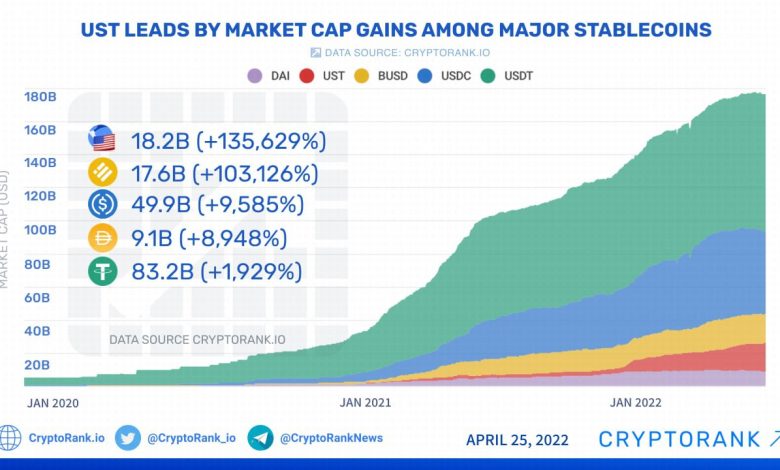Crypto Market Trends: Stablecoins Gaining Popularity

- Understanding the Rise of Stablecoins in the Crypto Market
- The Role of Stablecoins in Mitigating Volatility in Cryptocurrency Trading
- Comparing Stablecoins to Traditional Cryptocurrencies: What Sets Them Apart?
- Exploring the Various Types of Stablecoins Available to Investors
- Regulatory Challenges and Opportunities for Stablecoins in the Crypto Market
- The Future of Stablecoins: Predictions and Projections for Market Adoption
Understanding the Rise of Stablecoins in the Crypto Market
Stablecoins have been gaining significant traction in the cryptocurrency market in recent years. These digital assets are designed to minimize price volatility by pegging their value to a stable asset, such as a fiat currency like the US dollar or a commodity like gold. This stability makes stablecoins an attractive option for investors and traders looking to hedge against the extreme price fluctuations commonly associated with other cryptocurrencies.
One of the key reasons behind the rise of stablecoins is their ability to provide a reliable store of value and medium of exchange within the crypto ecosystem. This stability makes them particularly useful for facilitating transactions and remittances, as users can avoid the risk of losing value due to sudden price swings. Additionally, stablecoins offer a level of transparency and security that is often lacking in traditional fiat currencies, making them an appealing alternative for individuals and businesses operating in the digital economy.
Another factor driving the popularity of stablecoins is the growing interest in decentralized finance (DeFi) applications. These platforms leverage blockchain technology to offer a range of financial services, such as lending, borrowing, and trading, without the need for traditional intermediaries like banks. Stablecoins play a crucial role in the DeFi ecosystem by providing a stable unit of account for these transactions, enabling users to access financial services with minimal exposure to market volatility.
Overall, the rise of stablecoins reflects a broader trend towards the mainstream adoption of cryptocurrencies and blockchain technology. As more individuals and institutions recognize the benefits of digital assets, stablecoins are likely to play an increasingly important role in shaping the future of finance. Whether used as a safe haven for preserving wealth or as a means of accessing innovative financial services, stablecoins are poised to remain a key driver of growth and innovation in the crypto market for years to come.
The Role of Stablecoins in Mitigating Volatility in Cryptocurrency Trading
Stablecoins play a crucial role in mitigating the volatility often associated with cryptocurrency trading. These digital assets are designed to maintain a stable value by pegging them to a reserve asset, such as a fiat currency like the US dollar or a commodity like gold. By providing traders with a more stable option for storing value, stablecoins help reduce the risk of sudden price fluctuations that are common in the crypto market.
One of the main advantages of using stablecoins is that they offer a reliable store of value during times of market turbulence. Traders can quickly convert their volatile cryptocurrencies into stablecoins to protect their funds from losing value. This ability to hedge against market volatility is especially valuable for investors looking to minimize risk while still participating in the cryptocurrency market.
Furthermore, stablecoins can also serve as a convenient medium of exchange for trading pairs on cryptocurrency exchanges. By using stablecoins as a base currency, traders can easily move in and out of positions without having to convert back to fiat currencies. This seamless integration of stablecoins into the trading ecosystem has contributed to their growing popularity among cryptocurrency enthusiasts.
Comparing Stablecoins to Traditional Cryptocurrencies: What Sets Them Apart?
When comparing stablecoins to traditional cryptocurrencies, it is important to understand the key differences that set them apart. While both types of digital assets operate on blockchain technology, stablecoins are designed to minimize price volatility by pegging their value to a stable asset, such as a fiat currency or commodity. This stability makes stablecoins an attractive option for users who want to avoid the price fluctuations commonly associated with traditional cryptocurrencies like Bitcoin and Ethereum.
One of the main advantages of stablecoins is their ability to maintain a relatively constant value, which can make them more suitable for everyday transactions and store of value purposes. In contrast, traditional cryptocurrencies are known for their price volatility, which can make them less predictable and risky for users. Additionally, stablecoins can offer faster transaction speeds and lower fees compared to traditional cryptocurrencies, making them a more efficient option for transferring value across borders.
Another key difference between stablecoins and traditional cryptocurrencies is their regulatory status. Stablecoins are often issued by regulated entities and are subject to oversight by financial authorities, which can provide users with an added layer of security and trust. On the other hand, traditional cryptocurrencies operate in a more decentralized and unregulated environment, which can lead to concerns about security and compliance with laws and regulations.
Overall, while both stablecoins and traditional cryptocurrencies offer unique benefits and use cases, it is important for users to understand the differences between the two in order to make informed decisions about which type of digital asset best suits their needs and preferences.
Exploring the Various Types of Stablecoins Available to Investors
Stablecoins have become increasingly popular among investors in the crypto market due to their ability to maintain a stable value by being pegged to a reserve asset. There are various types of stablecoins available to investors, each with its own unique characteristics and mechanisms.
One type of stablecoin is fiat-collateralized stablecoins, which are backed by fiat currencies such as the US dollar or the Euro. These stablecoins are issued by companies that hold an equivalent amount of fiat currency in reserve to ensure the stability of the stablecoin’s value. Examples of fiat-collateralized stablecoins include Tether (USDT) and USD Coin (USDC).
Another type of stablecoin is crypto-collateralized stablecoins, which are backed by other cryptocurrencies held in a smart contract. These stablecoins are overcollateralized to protect against price volatility in the underlying cryptocurrencies. Examples of crypto-collateralized stablecoins include DAI and sUSD.
Algorithmic stablecoins are a third type of stablecoin that uses algorithms to automatically adjust the stablecoin’s supply in response to changes in demand. These stablecoins do not rely on any collateral and instead use mechanisms such as seigniorage shares to maintain stability. Examples of algorithmic stablecoins include Ampleforth (AMPL) and Terra (LUNA).
Investors have a wide range of stablecoins to choose from, each offering different levels of stability and security. By exploring the various types of stablecoins available, investors can find the one that best suits their investment goals and risk tolerance.
Regulatory Challenges and Opportunities for Stablecoins in the Crypto Market
Stablecoins have been gaining popularity in the crypto market due to their ability to provide stability and security to investors. However, along with their rise in popularity, stablecoins also face regulatory challenges and opportunities that need to be addressed.
One of the main regulatory challenges for stablecoins is the lack of clear guidelines and regulations from government authorities. This uncertainty can create a barrier for stablecoin issuers and users, as they may not know how to comply with existing laws or what the future regulatory landscape will look like.
On the other hand, regulatory clarity can also present opportunities for stablecoins to thrive in the market. By working closely with regulators and policymakers, stablecoin issuers can help shape the regulatory framework to ensure the long-term success and legitimacy of stablecoins.
Another regulatory challenge for stablecoins is the potential for misuse in illegal activities such as money laundering and terrorist financing. Regulators are increasingly focusing on implementing anti-money laundering (AML) and know your customer (KYC) regulations to prevent such activities in the crypto market.
Despite these challenges, stablecoins also offer opportunities to improve financial inclusion and access to digital assets for individuals who are unbanked or underbanked. By providing a stable store of value and low-cost transactions, stablecoins can help bridge the gap between traditional financial systems and the emerging crypto economy.
The Future of Stablecoins: Predictions and Projections for Market Adoption
Stablecoins have been gaining traction in the crypto market due to their ability to provide stability and security compared to other volatile cryptocurrencies. As more investors seek a safe haven for their digital assets, stablecoins are projected to see increased market adoption in the future.
One prediction for the future of stablecoins is their integration into mainstream financial systems. With the rise of central bank digital currencies (CBDCs) and the growing interest from traditional financial institutions, stablecoins are expected to play a significant role in the digital economy. This integration could lead to a surge in demand for stablecoins as a reliable medium of exchange and store of value.
Another projection for stablecoins is their use in cross-border transactions and remittances. With the ability to facilitate fast and low-cost transfers, stablecoins offer a convenient solution for individuals and businesses looking to send money across borders. As more people recognize the benefits of using stablecoins for international payments, their adoption is likely to increase in the coming years.
Furthermore, the development of decentralized finance (DeFi) platforms is expected to drive the demand for stablecoins even higher. By providing users with access to a wide range of financial services such as lending, borrowing, and trading, DeFi platforms rely heavily on stablecoins to maintain price stability and liquidity. As the DeFi ecosystem continues to expand, stablecoins will play a crucial role in supporting its growth and innovation.
Overall, the future of stablecoins looks promising as they continue to gain popularity and acceptance in the crypto market. With their potential to revolutionize the way we transact and store value, stablecoins are poised to become a key player in the digital economy of tomorrow.



